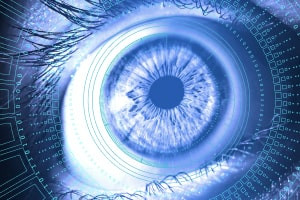Computer vision has evolved from mimicking human vision systems to vision-based robotic systems for making reliable decisions. Though the human visual system is amazing in processing images, it falls short in perceiving the world in the same manner as digital detectors. How do we translate the human visual system to digital imaging devices to make reliable decisions? We should approach this scientifically to achieve an aesthetic standard to support a preferred reality using image processing techniques. How are quality decisions from the processed images made? This process calls for the strategies to visualize and comprehend digital images’ content for reliable decision-making. This undertaking is the primary function of computer vision. Further, the overlap between image processing and computer vision at the conceptual level, and the often misunderstood jargon, causes them to be used interchangeably. This course will address all these techniques and explain their differences at the fundamental level.
‘Image descriptors’ describe the elementary characteristics such as the shape, color, texture or motion of the image. They are the first step to finding out the connection between pixels in a digital image and what humans recall after observing an image. It is thus essential to understand the process of detecting such features and conceptualize how feature correspondences can be established across different images. What characteristics make good image features? What kind of algorithms are used to extract features in images? The course will look at these questions and describe how features can be detected and tracked through a sequence of images and fused with other sources for localization. In addition, it addresses how feature learning is investigated to generate more efficient features for biological image-processing tasks such as recognition, retrieval, tracking and categorizing of images.
The human brain is an extremely complex structure, with around 100 billion neurons and 1,000 trillion synaptic interconnections. It relies on electrochemical signalling with inter-related timing and analogue components, the sort of molecular and biological machinery that neuroscientists are only beginning to unravel. Is it possible to simulate the human brain? Are artificial neural networks a good model for the brain? Are neural networks, which are suitable devices for computation, really able to imitate the human mind? This course will introduce you to the field of computer vision and deep learning and help you answer many questions that are commonly prevalent in these disciplines. This course in computer vision foundations is an informative course that will interest those studying computer science or those interested in these topics. Why wait? Sign up today and start learning about this prominent field of humanizing machines through deep learning.
What You Will Learn In This Free Course
View All Learning Outcomes View Less All Alison courses are free to enrol, study, and complete. To successfully complete this Diploma course and become an Alison Graduate, you need to achieve 80% or higher in each course assessment.
Once you have completed this Diploma course, you have the option to acquire an official Diploma, which is a great way to share your achievement with the world.
Your Alison certificate is:
- Ideal for sharing with potential employers.
- Great for your CV, professional social media profiles, and job applications.
- An indication of your commitment to continuously learn, upskill, and achieve high results.
- An incentive for you to continue empowering yourself through lifelong learning.
Alison offers 2 types of Diploma for completed Diploma courses:
- Digital Diploma: a downloadable Diploma in PDF format immediately available to you when you complete your purchase.
- Physical Diploma: a physical version of your officially branded and security-marked Diploma
All Diplomas are available to purchase through the Alison Shop. For more information on purchasing Alison Diploma, please visit our FAQs. If you decide not to purchase your Alison Diploma, you can still demonstrate your achievement by sharing your Learner Record or Learner Achievement Verification, both of which are accessible from your Account Settings.











 Avg. Hours
Avg. Hours  Contains Video
Contains Video  CPD Accredited
CPD Accredited 
 Total XP:
Total XP: 
 Knowledge & Skills You Will Learn
Knowledge & Skills You Will Learn 






